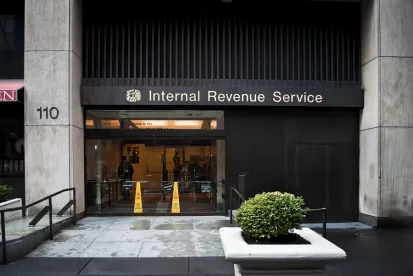On May 4, 2020, the IRS issued Revenue Procedure 2020-19, which temporarily allows a publicly-offered REIT or RIC to pay as much as 90% of a distribution in its own stock (rather than cash or other property) and still have the entire amount treated as a dividend for US federal income tax purposes. As a result, the distribution will qualify for purposes of the REIT or RIC’s dividend distribution requirement and the dividend paid deduction, so long as certain requirements are satisfied. Revenue Procedure 2020-19 closely follows the format of similar guidance issued during the 2008 financial crisis and applies to distributions declared on or after April 1, 2020, and on or before December 31, 2020.
A REIT or RIC generally must distribute at least 90% of its REIT or RIC taxable income on an annual basis in the form of qualifying dividends in order to maintain its status as a REIT or RIC for US federal income tax purposes. To avoid all corporate-level tax, a REIT or RIC must distribute all of its REIT or RIC taxable income each year.
Under Revenue Procedure 2020-19, a publicly-offered REIT or RIC may pay up to 90% of a distribution in its own stock (and the remaining 10% in cash (or other property)) and still have the entire amount of the distribution qualify as a dividend for US federal income tax purposes, so long as certain conditions are satisfied.[1] After December 31, 2020, a publicly-offered REIT or RIC will be permitted to pay up to 80% of the distribution in the REIT or RIC’s stock and still have the entire amount treated as a dividend for US federal income tax purposes.
In order for a distribution paid by a publicly-offered REIT or RIC partially in its own stock to be treated as a dividend for US federal income tax purposes, the distribution must be payable at the election of each shareholder in cash (or other property) or stock of the REIT or RIC (or a combination of the two), but may have a “cash cap” that limits the total amount of cash paid to not less than 10% of the entire distribution (or 20% for dividends declared after December 31, 2020). If shareholders in the aggregate elect to receive an amount of cash greater than the REIT or RIC’s cash cap, then each shareholder who elected to receive cash receives a pro rata share of the cash and the rest of their distribution in stock of the REIT or RIC. The amount of the dividend for US federal income tax purposes will be the value of the stock distributed plus the amount of cash distributed to a shareholder. Shareholders will be subject to tax on the entire amount they receive, even though a portion of the distribution will be in stock.
[1] A publicly-offered REIT or RIC is one that is required to file annual and periodic reports with the Securities and Exchange Commission under the Securities Exchange Act of 1934.





 />i
/>i

